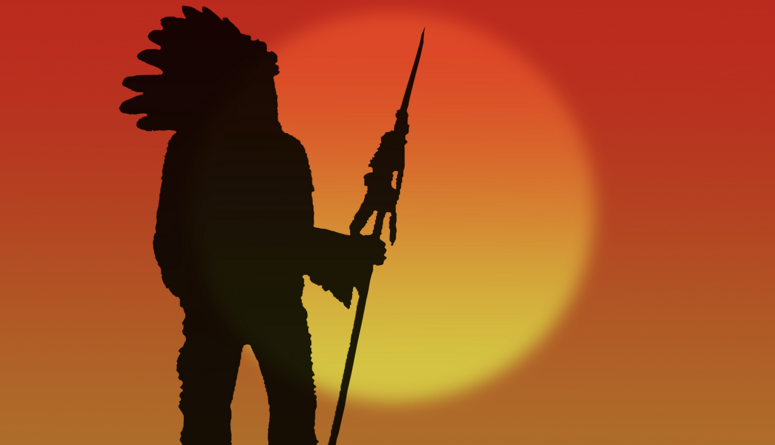
Konkurs realioznawczy - The origin of the human races
There were many Native American tribes in North America, and each of them had their own myths. Most of these stories were passed down orally, as Native Americans did not use written languages. Instead, they had storytellers whose job was to keep the legends alive.
Although Native American myths differed from tribe to tribe, there are certain things they had in common. Most of them involved a creator, who was sometimes referred to as the Great Spirit, Wakan Tanka or Gitche Manitou in a number of Native American and First Nations tribes. Another thing they had in common was the belief that humans, animals, and plants were all interconnected and equally important. Animals often had special roles in Native American mythology. In some cases, they helped humans and granted them special favours, and very often they possessed human traits. Most tribes had myths about the creation of the world and man. The myth below explains the origins of the human races, and it does not come as a surprise that the white race is not portrayed in a very good light.
According to the myth, long, long ago, when the Earth was young, Gitche Manitou, or the Great Spirit, was sitting on a rock, smoking a pipe and watching the beautiful world he had created. He was pleased with his creation, but then he saw that the animals were arguing with each other over which of them was the most powerful. Manitou listened to their bickering and set out to create a being that would be more powerful than all the animals and would instill fear in them.
He put down his pipe and set to work. First, he gathered some stones and built a furnace. Next, he spent four days gathering dry twigs and buffalo manure for fuel. When he had gathered enough, he felt tired, and he took a rest. Alas, as soon as he fell asleep, a rattlesnake crept up, sprayed the brushwood with its venom, and left its old skin in the fire.
The Great Spirit awoke, made a man out of clay, and put him into the furnace. However, when he took him out, it turned out that he was weak and pale. To make things worse, the rattlesnake's venom made him evil, mean and treacherous. Manitou was not pleased with such a creature, so he threw him out across the Great Water, and went back to work.
He took some clay and formed another man, and he baked him in a fire of pine wood, which he had collected over another four days. But he fell asleep, and when he woke up, the man came out completely black. His muscles were strong, but he was anxious and hesitant. Manitou was not pleased with the second man he created, so he hurled him across the Great Water and went back to work.
On his third attempt, the Great Spirit picked up some birch branches to make the new man fast; some oak branches to make him strong; larch branches to give him powerful muscles; and tar and resin to make him resistant to weather conditions and give him a sense of unity with nature.
The third man turned out to be perfect - he was smart, strong, handsome and brown-skinned. The Great Spirit was really pleased when he looked at him, and he gave the man the whole world he had created: the woods, the prairies and the animals. He also warned him that he should live in harmony with nature and other tribes, for if he did not, the white man he had thrown out across the Great Water would return and destroy the prairies and forests together with the people and animals living in them.
The legend contains an order for Native Americans to respect and live in harmony with the natural world and with other tribes, because they can only last as long as there is nature around them, and the prairies and forests are full of wild animals and buffalo. As we know, the arrival of white settlers had disastrous consequences for the indigenous people of North America who were decimated by the colonists, and lost their land they had owned for thousands of years.